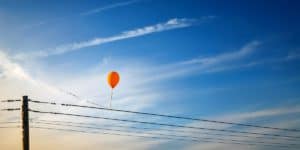If you’re on a Time Of Use electricity tariff in the Ausgrid network (Sydney, Central Coast or Hunter Region), chances are your retailer has been giving you a raw deal.
That’s because almost half of retailers haven’t passed on Ausgrid’s reduced peak hour network charges for Time Of Use customers from 2018. The tariff changed again on July 1 2024 – and guess what? Most retailers still aren’t following the new tariff hours. If you think every Time of Use plan has the same hours, read on to find out which retailers are sharing the savings and which are holding them back…Fewer peak hours, but many wouldn’t know it.
From July 2018, Ausgrid stopped charging its peak tariff in April, May, September and October. Many households would be unaware of the seasonal Time of Use tariff because it was not widely publicised. So many retailers kept charging the ‘old’ peak times during the 30 hours each week for these four months of the year (adding up to ~ 500 hours p.a).
New tariff. Same old story.
On July 1, 2024, Ausgrid changed the Time of Use tariff to include only Peak and an Off-peak periods. The Shoulder period was dropped. During Summer (November 1 to March 31) and Winter (June 1 to August 31) a Peak period is applied from 3pm to 9pm every day. At any other time, an off-peak rate applies. Plus, during the four months outside the Summer and Winter season, a single Off-peak rate is charged by the network. Less than half of electricity retailers are following the new Time of Use network tariff.
Not all Time of Use plans have equal hours.
The total effect is that Time Of Use consumers with many retailers will likely be paying at least an extra 20 cents (inc GST) for each kWh they consume across ~630 hours per year.
For a household using 1kWh of electricity in those 630 “extra” peak hours, some retailers will pocket ~$125 p.a. by not aligning with the seasonal tariff hours.
Let’s look at which retailers share the savings and those yet to pass on the reduced peak periods.
New two-period Time of Use
As of 4th December 2025, the following retailers have adopted Ausgrid’s current Time Of Use periods for tariff EA025 for households (based on their published Basic Plan Information Documents) and offer peak periods for only eight months of the year. The Peak period only applies in Summer (Nov-Mar) & Winter (Jun-Aug)
- Energy Locals
- ENGIE
- Flow Power
- Kogan Energy
- Momentum Energy
- nectr
- OVO Energy
- Pacific Blue
- Powershop
- Tango Energy
- Sumo
- Amber (market-link plans pass on network costs and the wholesale energy price)
Many following the old three-period Time of Use
Many large retailers still include an additional Shoulder period, which is now not charged by the network including.
- AGL
- Alinta Energy
- CovaU (on some plans)
- Dodo
- EnergyAustralia
- Origin Energy
- Red Energy
While other retailers that offer two rate time of use still apply peak rates all year round and are not aligned with the standard Ausgrid TOU seasonality. (All information sourced from Retailers published Basic Plan Information Documents)
Annual hours of Time of Use periods in Ausgrid by Retailer
Over a year, this is the percentage of hours for Time of Use periods for each retailer. Some retailers even run different time of use hours on different plans. Make sure to check the hours on your shortlisted plans.
| Retailer | Peak Hrs | Shoulder Hrs | Off-Peak Hrs | Peak period |
|---|---|---|---|---|
| Diamond Energy | 12% | 0% | 88% | 5pm-9pm Weekdays All year |
| Energy Locals | 17% | 0% | 83% | 3pm-9pm Summer + Winter |
| ENGIE | 17% | 0% | 83% | 3pm-9pm Summer + Winter |
| Flow Power | 17% | 0% | 83% | 3pm-9pm Summer + Winter |
| Kogan Energy | 17% | 0% | 83% | 3pm-9pm Summer + Winter |
| Momentum Energy | 17% | 0% | 83% | 3pm-9pm Summer + Winter |
| nectr | 17% | 0% | 83% | 3pm-9pm Summer + Winter |
| OVO Energy | 17% | 0% | 83% | 3pm-9pm Summer + Winter |
| Pacific Blue | 17% | 0% | 83% | 3pm-9pm Summer + Winter |
| Powershop | 17% | 0% | 83% | 3pm-9pm Summer + Winter |
| Sumo | 17% | 0% | 83% | 3pm-9pm Summer + Winter |
| Tango Energy | 17% | 0% | 83% | 3pm-9pm Summer + Winter |
| 1st Energy | 25% | 0% | 75% | 3pm-9pm All year |
| Flipped Energy | 25% | 0% | 75% | 2pm-8pm All year |
| GloBird Energy | 25% | 0% | 75% | 3pm-9pm All year |
| EnergyAustralia | 10% | 52% | 38% | 2pm-8pm Summer Weekdays, 5-9pm Winter Weekdays |
| Origin Energy | 10% | 52% | 38% | 2pm-8pm Summer Weekdays, 5-9pm Winter Weekdays |
| AGL | 25% | 59% | 16% | 3pm-9pm All year. Off-Peak 10am-2pm |
| Alinta Energy | 18% | 45% | 37% | 2pm-8pm Weekdays All year |
| Dodo | 18% | 45% | 37% | 2pm-8pm Weekdays All year |
| CovaU* | 18% | 45% | 37% | Some plans Weekdays 2pm-8pm All year. Other plans 3pm-9pm All year. |
| Red Energy | 18% | 45% | 37% | 2pm-8pm Weekdays All year |
Applying Peak Period hours everyday across the year can add up to 732 extra Peak hours annually when compared to the standard network hours for the EA025 seasonal Time of Use tariff (122 off-season days x 6 hrs peak). While the legacy three period tariff has lower peak hours annually ( 10% vs 17% for the new two period tariff), retailers offering the three period tariff are charging a shoulder period rate for 45-52% of the time – which is higher than the Off-Peak rate.
How do I work out what’s a good deal?
It’s hard to calculate the full impact of this issue without considering a household’s full meter data history. Hourly usage data enables an accurate calculation to reflect the costs between retailers using the current and old-time of use periods. Here are some ideas for households in the Ausgrid network area on Time Of Use tariffs to be mindful of when shopping for a better deal.
The most consistent period is summer when retailers are generally applying the 3-9pm peak. However, it’s the other times of the year when the seasonal Time of Use works out better that you’ll need to account for. For example, if you are comparing a current bill from a retailer using year-round peak – then don’t forget to move any ‘peak’ hours in April, May, September and October to ‘shoulder’ when entering into a comparison – to get an estimate for seasonal rates. One simple rule of thumb for the average household is to factor an additional ~$100 in favour of retailers offering Ausgrid’s seasonal TOU tariffs vs those still applying their own year-round peak tariff.
Pass it on
The Australian Energy Regulator has been pushing electricity networks hard to implement cost-reflective tariffs. And ultimately, the intention of this is for retailers to pass costs and savings on to consumers.
Where there is falling or limited demand on the network, like in Autumn and Spring, peak network charges in Ausgrid have been removed, and so-to should retail peak costs. In Winter, when electricity demand has moved later into the evening and for a shorter period (thanks to solar), the Ausgrid network peak cost period have been adjusted and reduced.
If it looks like price gouging…
Energy retailers should have the opportunity to innovate and try different pricing offers to appeal to households. If there’s a genuine trade-off – between peak rates and lower off peak rates like free electricity offers – then bring it on. But what if it’s simply hanging onto the old, more complex TOU periods that don’t reflect network costs. In that case, it’s just another brick in the wall of frustration for energy consumers, limiting their access to lower cost energy by making it harder to compare.
Now you know that not all Time of Use plans in Ausgrid are created equal.
David Hiley

2025-26 DMO electricity price rise
Power price changes are just around the corner. Here’s the rundown on the 2025-26 Default Market Offer (DMO) electricity price and what it means for energy bills from July.

Cheaper Home Battery Program set to boom
The Federal government’s new $2.3 billion Cheaper Home Batteries Program offers a generous battery discount for Aussie households and small businesses.

2025-26 Victorian Default Offer electricity price announced
Victoria’s Essential Service Commission (ESC) has released its final determination for the 2025–26 Victorian Default Offer electricity price (VDO). The good news is there will be very little change to electricity prices from July 1

